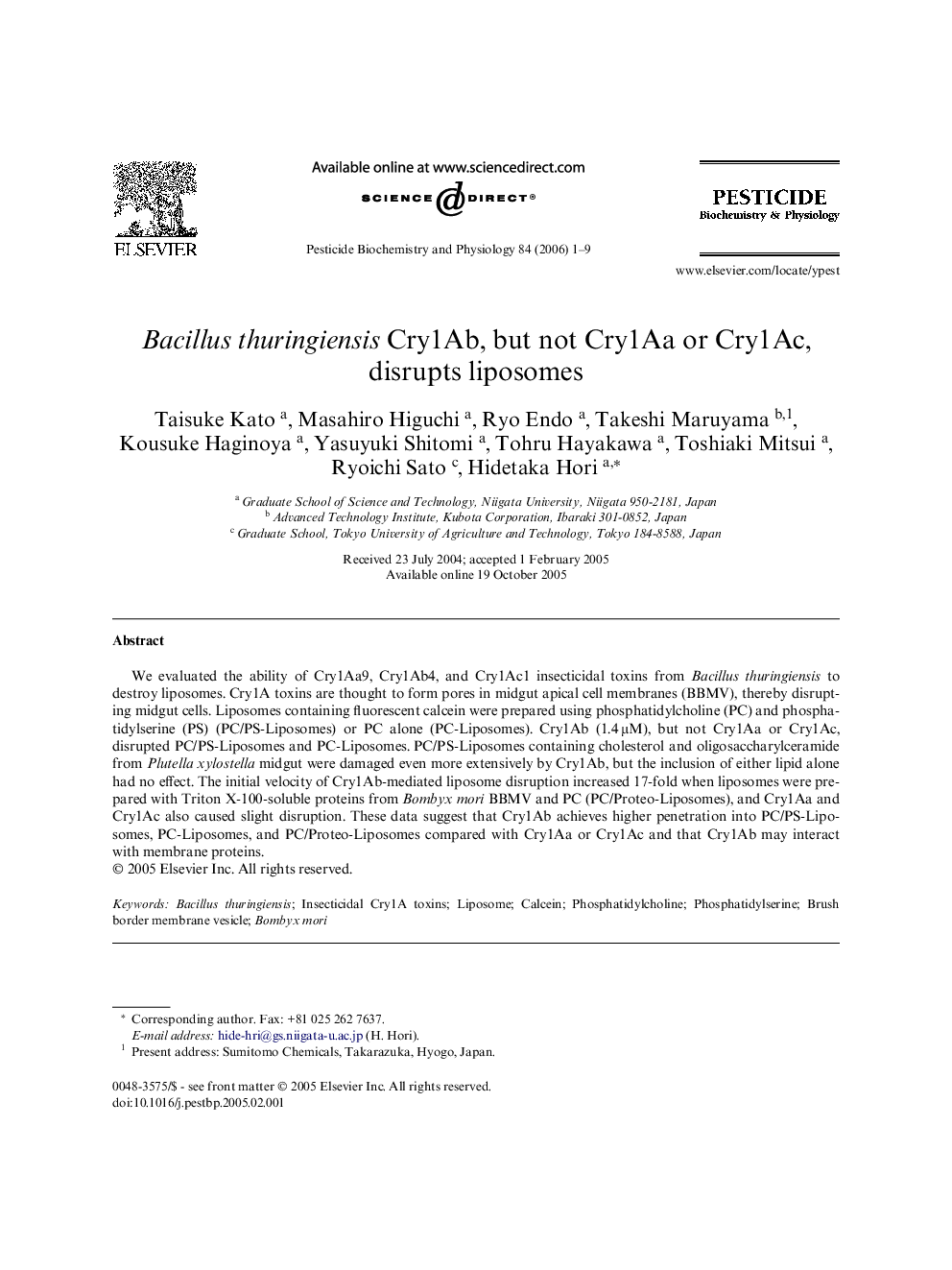| Article ID | Journal | Published Year | Pages | File Type |
|---|---|---|---|---|
| 2010284 | Pesticide Biochemistry and Physiology | 2006 | 9 Pages |
Abstract
We evaluated the ability of Cry1Aa9, Cry1Ab4, and Cry1Ac1 insecticidal toxins from Bacillus thuringiensis to destroy liposomes. Cry1A toxins are thought to form pores in midgut apical cell membranes (BBMV), thereby disrupting midgut cells. Liposomes containing fluorescent calcein were prepared using phosphatidylcholine (PC) and phosphatidylserine (PS) (PC/PS-Liposomes) or PC alone (PC-Liposomes). Cry1Ab (1.4 μM), but not Cry1Aa or Cry1Ac, disrupted PC/PS-Liposomes and PC-Liposomes. PC/PS-Liposomes containing cholesterol and oligosaccharylceramide from Plutella xylostella midgut were damaged even more extensively by Cry1Ab, but the inclusion of either lipid alone had no effect. The initial velocity of Cry1Ab-mediated liposome disruption increased 17-fold when liposomes were prepared with Triton X-100-soluble proteins from Bombyx mori BBMV and PC (PC/Proteo-Liposomes), and Cry1Aa and Cry1Ac also caused slight disruption. These data suggest that Cry1Ab achieves higher penetration into PC/PS-Liposomes, PC-Liposomes, and PC/Proteo-Liposomes compared with Cry1Aa or Cry1Ac and that Cry1Ab may interact with membrane proteins.
Keywords
Related Topics
Life Sciences
Agricultural and Biological Sciences
Agronomy and Crop Science
Authors
Taisuke Kato, Masahiro Higuchi, Ryo Endo, Takeshi Maruyama, Kousuke Haginoya, Yasuyuki Shitomi, Tohru Hayakawa, Toshiaki Mitsui, Ryoichi Sato, Hidetaka Hori,
